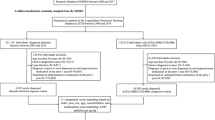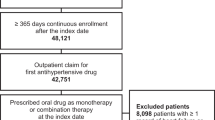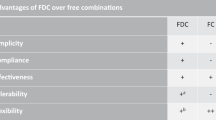Abstract
The objective of the study was to describe the patterns of antihypertensive medicines (AHM) in a selected national population in Ghana. The claims data for all privately insured patients in Ghana over three years to 2018 were analysed. The classes of medicines used, the dose by time, gender and age, and generic status were examined. In addition, the use in Defined Daily Dose (DDD) per 1000 population per day was estimated. Classes of AHM prescribed were CCB, ARB, ACEI, diuretics, and BB. Amlodipine, nifedipine, losartan, lisinopril, and bendroflumethiazide accounted for 74% of all use. The most widely used single CCB was amlodipine 3.92 DDD/1,000 population/day in 2016, 3.92 DDD/1,000 population/day in 2017, and 4.92 DDD/1,000 population/day in 2018. In those aged 51–60 years, use of CCB in women (74.0 DDD/1,000 population/day) was almost twice that of men (38.3 DDD/1,000 population/day). The top ten medicines accounted for 93% of all single medicine products in 2018. Most single medicine products was generic (76.5% in 2016; 79.9% in 2017 and 83.1% in 2018) whiles most fixed combination products were branded (73.0% in 2016; 89.7% in 2017 and 91.3% in 2018). The patterns of AHM use are clinically expected although the Ghana Standard Treatment guidelines are not directive about lines of treatment.
This is a preview of subscription content, access via your institution
Access options
Subscribe to this journal
Receive 12 digital issues and online access to articles
$119.00 per year
only $9.92 per issue
Buy this article
- Purchase on Springer Link
- Instant access to full article PDF
Prices may be subject to local taxes which are calculated during checkout


Similar content being viewed by others
Data availability
The data that support the findings of this study are not openly available due to reasons of sensitivity. Data is in a controlled access data storage of Rx Info Systems. However, the anonymised data is available upon request from the corresponding author.
References
WHO. World Health. 2018 Non-communicable diseases. [cited 2019 Nov 10] Available from: https://www.who.int/news-room/fact-sheets/detail/noncommunicable-diseases
Islam SMS, Purnat TD, Phuong NTA, Mwingira U, Schacht K, Fröschl G. Non-communicable diseases (NCDs) in developing countries: a symposium report. Glob Health. 2014;10:81.
Bosu WK, Bosu DK. Prevalence, awareness and control of hypertension in Ghana: a systematic review and meta-analysis. PLoS ONE. 2021;16:e0248137. Public Library of Science
Ministry Of Health. Standard Treatment Guidelines. 2017. 147–150 p.
Ministry of Health- Ghana. National Policy for the Prevention and Control of Chronic Non-Communicable Diseases in Ghana. 2012;(August):1–27.
Cappuccio FP, Micah FB, Emmett L, Kerry SM, Antwi S, Martin-Peprah R, et al. Prevalence, detection, management, and control of hypertension in Ashanti, West Africa. Hypertension. 2004;43:1017–22.
Reif MC What ’ s In the New Hypertension Guidelines? 2018;
Ettehad D, Emdin CA, Kiran A, Anderson SG, Callender T, Emberson J, et al. Blood pressure lowering for prevention of cardiovascular disease and death: A systematic review and meta-analysis. Lancet. 2016;387:957–67.
International Trade Administration. Ghana Health Insurance. 2022 [cited 2023, May 20] Available from: https://www.trade.gov/market-intelligence/ghana-healthcare-insurance
Rx Health Info Systems. Humanizing Healthcare Technology. 2019 [cited 2020 Jun 16] Available from: https://rxhealthinfosystems.com
Himmelfarb CD, Stafford RS, D PH. 2017 ACC / AHA / AAPA / ABC / ACPM / AGS / APhA / ASH / ASPC / NMA / PCNA Guideline for the Prevention, Detection, Evaluation, and Management of High Blood Pressure in Adults. 2018;71.
de la Sierra A. Amlodipine in the prevention and treatment of cardiovascular disease. Eur Cardiol Rev. 2007;3:66.
WHO. Guidelines for ATC classification and DDD assignment 2019. [cited 2020 Sept 6] Available from: https://www.whocc.no/atc_ddd_index_and_guidelines/guidelines/
Hollingworth S, Kairuz T. Measuring medicine use: applying ATC/DDD methodology to real-world data. Pharmacy. 2021;9:60.
Page MR. The JNC 8 hypertension guidelines: an in-depth guide. Am J Manag Care. 2014;20:E8.
Lummis H, Sketris I, Veldhuyzen Van Zanten S. Systematic review of the use of patients’ own medications in acute care institutions. J Clin Pharm Ther. 2006;31:541–63.
Fares H, DiNicolantonio JJ, O’Keefe JH, Lavie CJ. Amlodipine in hypertension: A first-line agent with efficacy for improving blood pressure and patient outcomes. Open Heart. 2016;3:1–7.
Gad M, Lord J, Chalkidou K, Asare B, Lutterodt MG, Ruiz F. Supporting the development of evidence-informed policy options: an economic evaluation of hypertension management in Ghana. Value Health. 2019;23:1–9.
Guang H, ZengWu W, Rui G, Zuo C, Xin W, LinFeng Z, et al. Effects of ACEI/ARB in hypertensive patients with type 2 diabetes mellitus: a meta-analysis of randomized controlled studies. BMC Cardiovasc Disord. 2014;14:1–7.
Helmer A, Slater N, Smithgall S. A review of ACE inhibitors and ARBs in black patients with hypertension. Ann Pharmacother. 2018;52:1143–51. SAGE Publications Inc.
Flack JM, Adekola B. Blood pressure and the new ACC/AHA hypertension guidelines. Trends Cardiovascular Med. 2020;30:160–4. Elsevier Inc
Unger T, Borghi C, Charchar F, Khan NA, Poulter NR, Prabhakaran D, et al. 2020 International society of hypertension global hypertension practice guidelines. J Hypertension. 2020;38:982–1004. Lippincott Williams and Wilkins
Hypertension in adults: diagnosis and management NICE guideline. 2019. [cited 2020 Dec 10] Available from: https://www.nice.org.uk/guidance/ng136/resources/hypertension-in-adults-diagnosis-and-management-pdf-66141722710213
Palla M, Ando T, Androulakis E, Telila T, Briasoulis A. Renin-angiotensin system inhibitors vs other antihypertensives in hypertensive blacks: a meta-analysis. J Clin Hypertens. 2017;19:344–50. Apr
Verma AA, Khuu W, Tadrous M, Gomes T, Mamdani MM. Fixed-dose combination antihypertensive medications, adherence, and clinical outcomes: A population-based retrospective cohort study. PLoS Med. 2018;15:e1002584.
Benjamin IJ, Kreutz R, Olsen MH, Schutte AE, Lopez-Jaramillo P, Frieden TR, et al. Fixed-dose combination antihypertensive medications. Lancet. 2019;394:637–8.
Dzokoto MK, Kpen B, Adam I Risk Factors for Hypertension among Ghanaians: Evidence from Ghana Demographic and Health Survey. 2019;(October):1–13.
Nyarko SH, Osei E, Komesuor J, Ananga MK. Prevalence and predictors of hypertension history among Ghanaian Men. Ghana J Geogr. 2017;9:50–63.
Sanuade OA, Boatemaa S, Kushitor MK. Hypertension prevalence, awareness, treatment and control in Ghanaian population: Evidence from the Ghana demographic and health survey. PLoS One. 2018;13:1–18.
Adomako NO, Marfo AFA, Opare-Addo MNA, Nyamekye N, Owusu-Daaku FT. Blood pressure control, accessibility, and adherence to antihypertensive medications: patients seeking care in two hospitals in the Ashanti Region of Ghana. Int J Hypertens. 2021;2021:9637760.
Harrison MA, Marfo AFA, Buabeng KO, Annan A, Nelson F, Boateng DP, et al. Blood pressure—lowering medication prescribing, its adherence to guidelines and relationship with blood pressure control at a family medicine department. Health Sci Rep. 2023;6:e1185.
Ashigbie PG, Azameti D, Wirtz VJ. Challenges of medicines management in the public and private sector under Ghana’s National Health Insurance Scheme - a qualitative study. J Pharm Policy Pract. 2016;9:6.
Adejumo O, Okaka E, Iyawe I. Prescription pattern of antihypertensive medications and blood pressure control among hypertensive outpatients at the University of Benin teaching hospital in Benin City, Nigeria. Malawi Med J. 2017;29:113–7.
Akebayeri ML Usage patterns and cost analysis of antihypertensive drugs reimbursed by the national health insurance in Gabon (Thesis). 2018;(https://repository.nwu.ac.za/handle/10394/28562).
Koduah A, Asare BA, Gavor E, Gyansa-Lutterodt M, Andrews Annan E, Ofei FW. Use of evidence and negotiation in the review of national standard treatment guidelines and essential medicines list: experience from Ghana. Health Policy Plan. 2019;34:II104–20.
Kayi EA, Atinga RA, Ansa GA. Informational sources on pharmaceutical medicines and factors affecting medication prescriptions: perspectives from Ghanaian physicians. J Med Mark. 2014;14:176–81.
Ofori-Asenso R, Brhlikova P, Pollock AM. Prescribing indicators at primary health care centers within the WHO African region: a systematic analysis (1995–2015). BMC Public Health. 2016;16:724.
Ghana [Internet]. [cited 2021 Mar 9]. Available from: https://www.who.int/countries/gha/
Author information
Authors and Affiliations
Contributions
AFAM, JSM, & SH: Conception, design, acquisition, and analysis of data. AFAM, JSM, SH & JPR: Drafting of manuscript and revising it. AFAM, JSM, SH & JPR: Revising and approval of final manuscript to be published.
Corresponding author
Ethics declarations
Competing interests
JSM has been reimbursed as consultant in the design of the Rx Claim software developed by Rx Health Info Systems for Health Insurance Firms in Ghana and Africa.
Additional information
Publisher’s note Springer Nature remains neutral with regard to jurisdictional claims in published maps and institutional affiliations.
Rights and permissions
Springer Nature or its licensor (e.g. a society or other partner) holds exclusive rights to this article under a publishing agreement with the author(s) or other rightsholder(s); author self-archiving of the accepted manuscript version of this article is solely governed by the terms of such publishing agreement and applicable law.
About this article
Cite this article
Marfo, A.F.A., Marfo, J.S., Plange-Rhule, J. et al. Trends in antihypertensive use among privately insured hypertensive clients in Ghana. J Hum Hypertens (2024). https://doi.org/10.1038/s41371-023-00885-z
Received:
Revised:
Accepted:
Published:
DOI: https://doi.org/10.1038/s41371-023-00885-z



